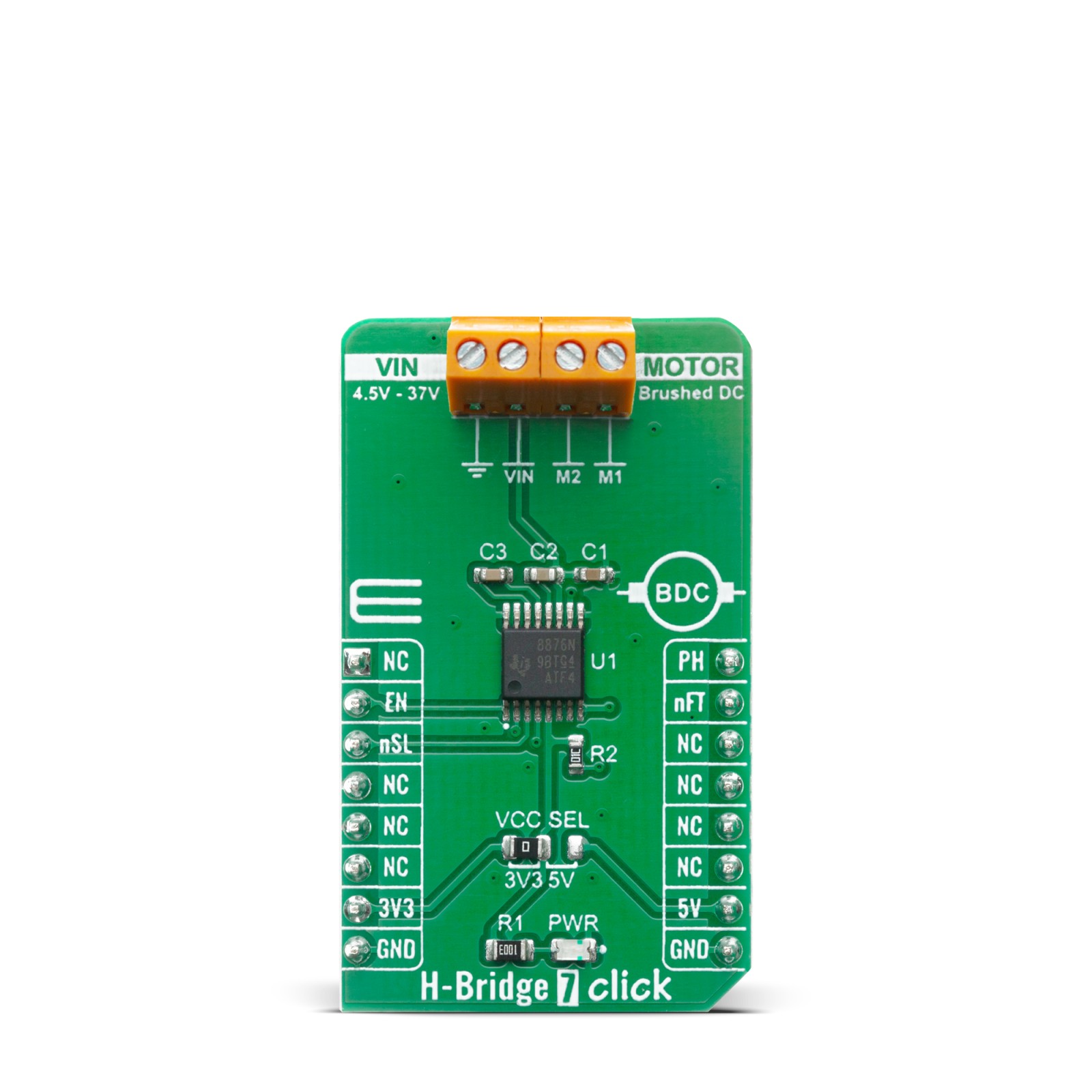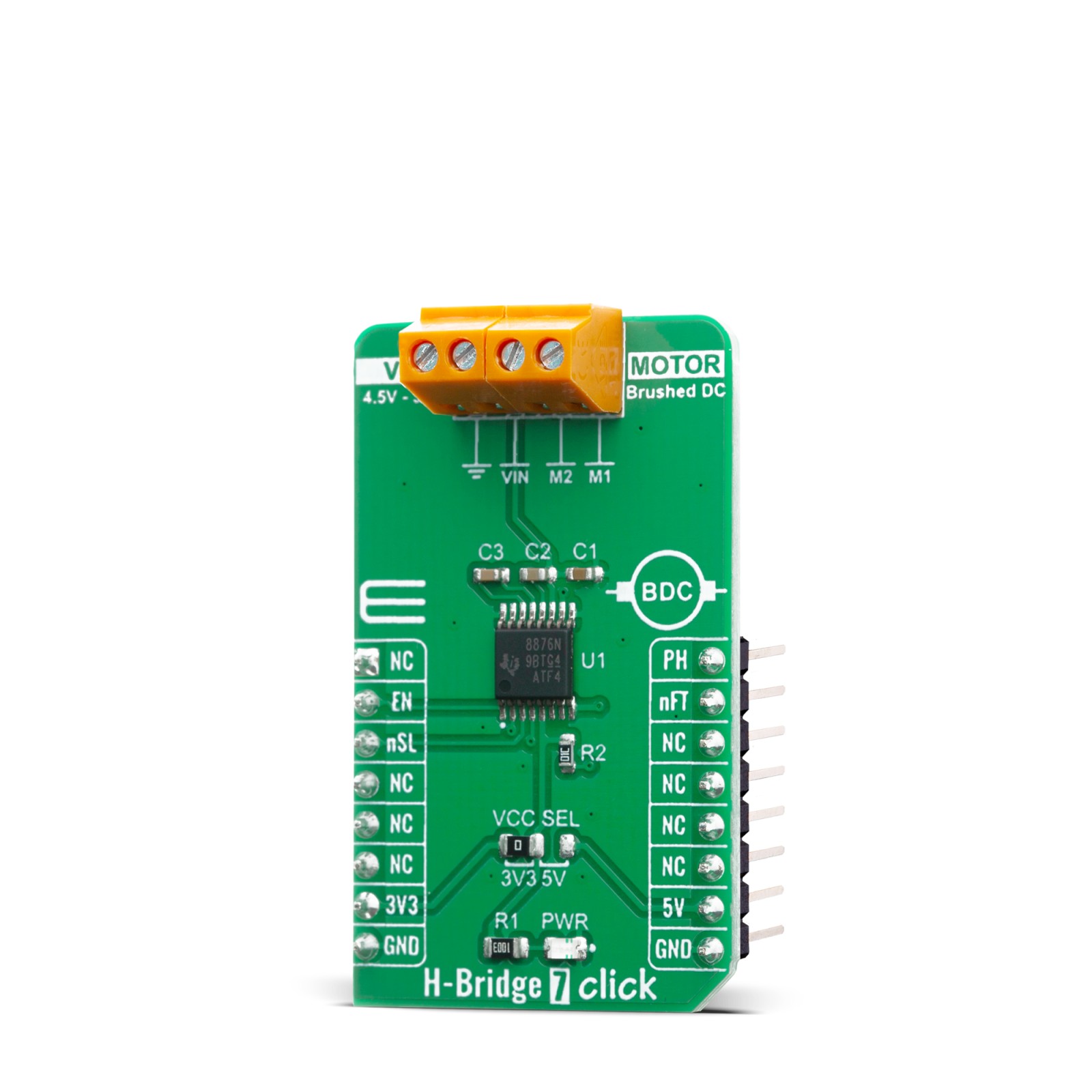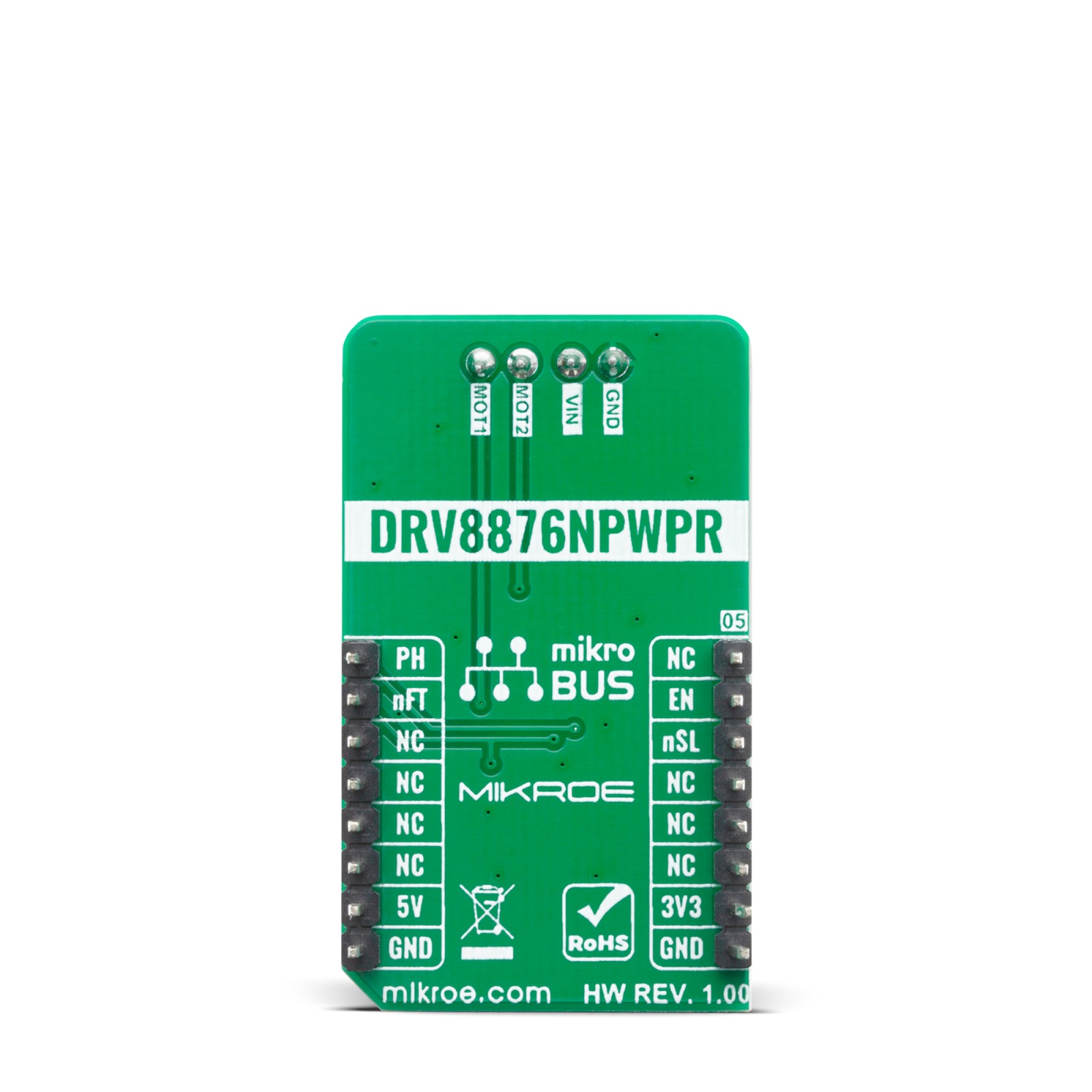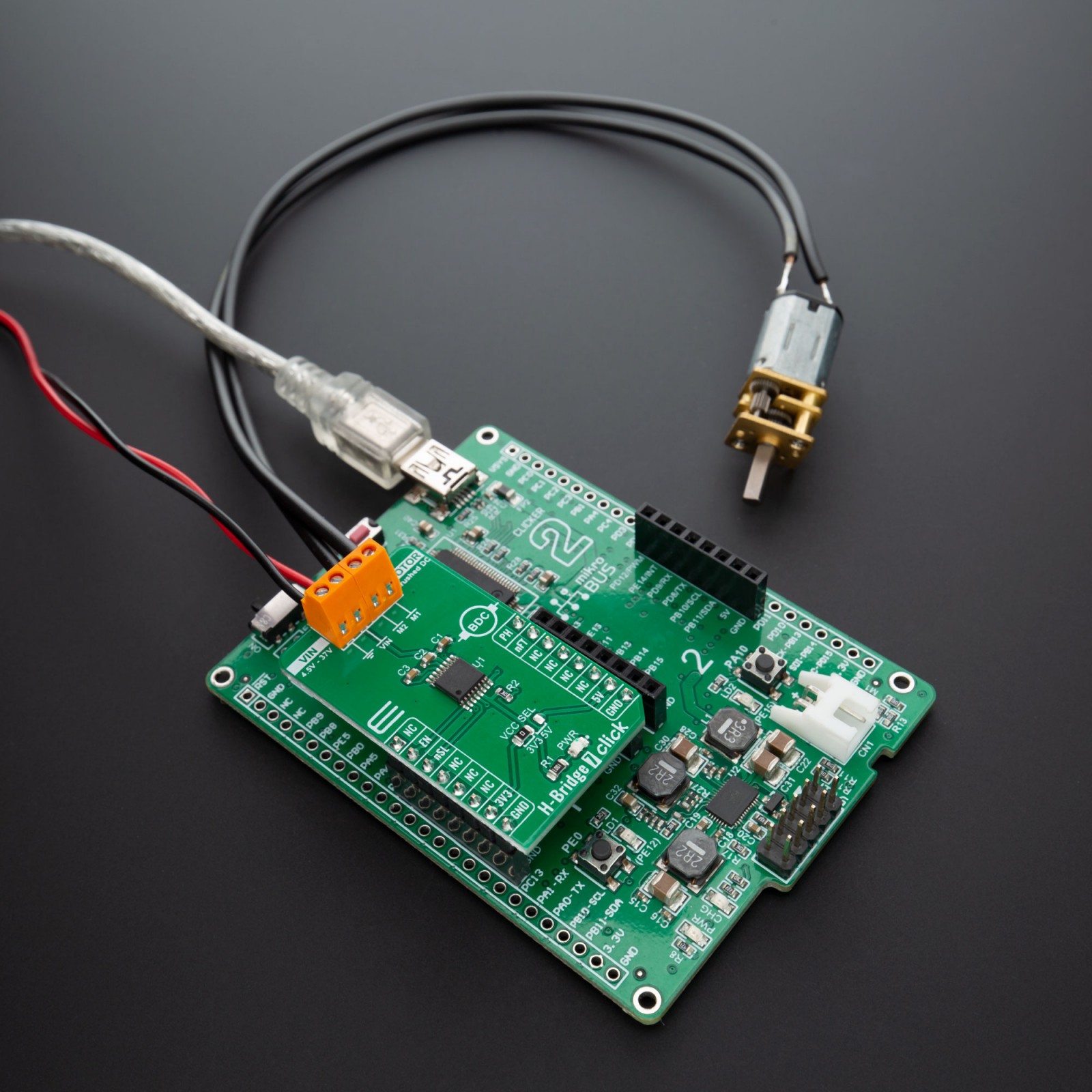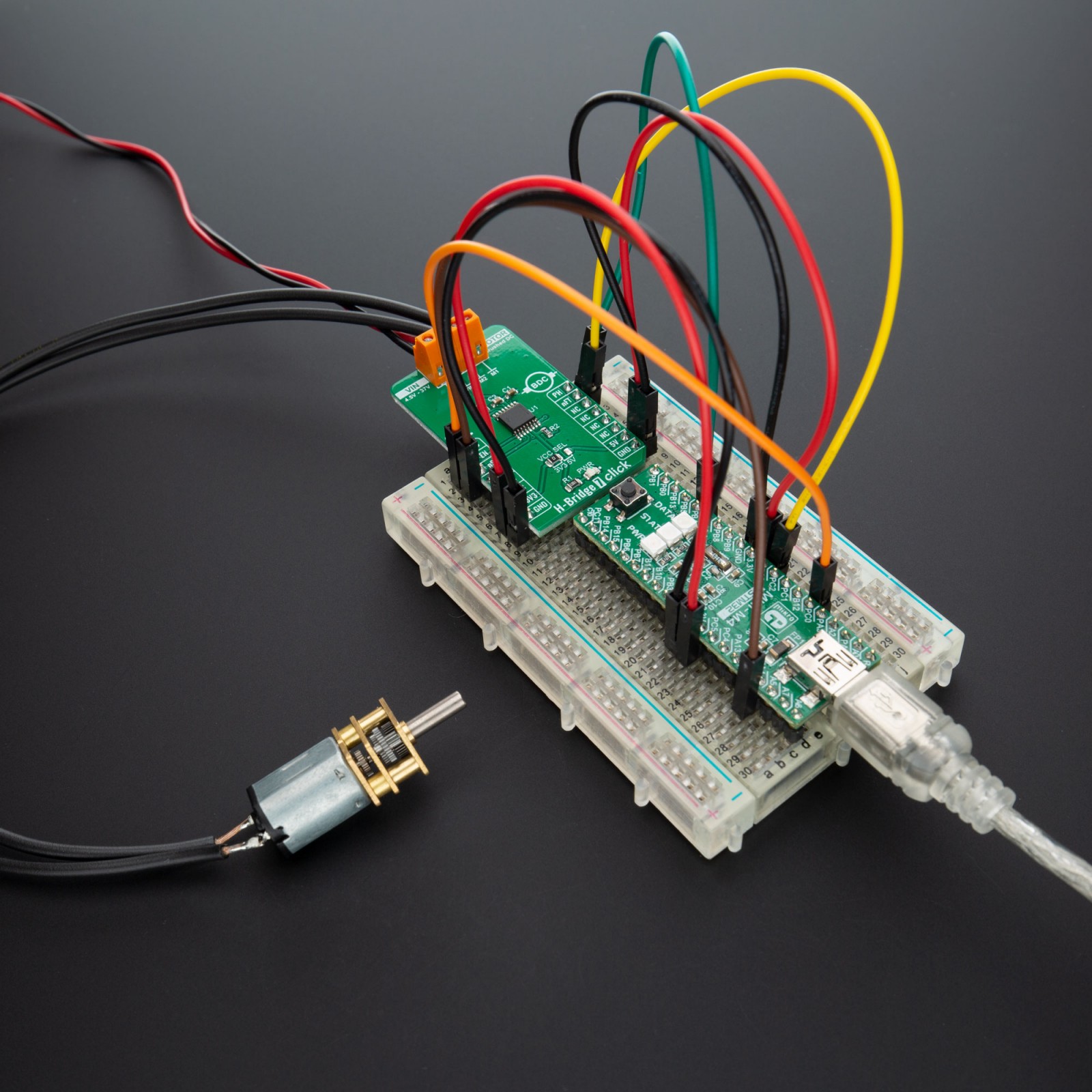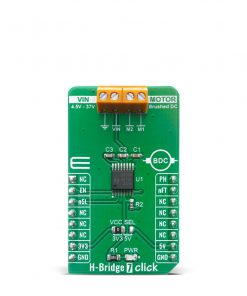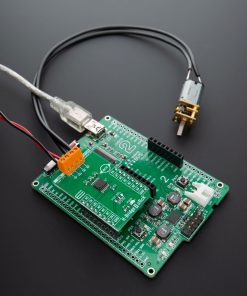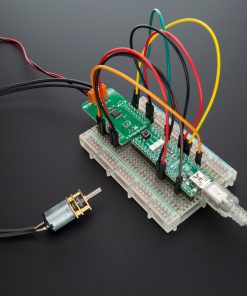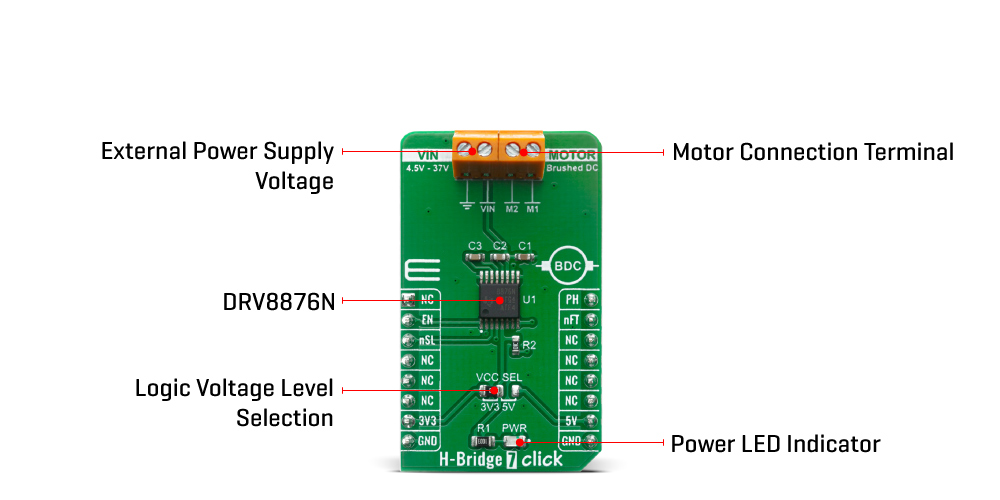Subtotal: R1,050.00
H-Bridge 7 Click
R275.00 ex. VAT
H-Bridge 7 Click features flexible motor driver IC for a wide variety of applications, labeled as the DRV8876N. This Click board™ integrates an N-channel H-bridge, charge pump regulator, and protection circuitry. The charge pump improves efficiency by allowing for both high-side and low-side N-channels MOSFETs and 100% duty cycle support. This IC allows the H-Bridge 7 Click to achieve ultra-low quiescent current draw by shutting down most of the internal circuitry with his low-power sleep mode. Internal protection features are provided for supply undervoltage lockout (UVLO), charge pump undervoltage (CPUV), output overcurrent (OCP), and device overtemperature (TSD). Fault conditions are indicated on the nFAULT pin (nFT pin on mikroBUS™). H-Bridge 7 Click can be used for DC Brush motor drive, servo motors, actuators, and more.
The H-Bridge 7 Click is supported by a mikroSDK compliant library, which includes functions that simplify software development. This Click board™ comes as a fully tested product, ready to be used on a system equipped with the mikroBUS™ socket.
NOTE: Due to the current component shortage on the electronic market lead time and pricing for this product can vary
Stock: Lead-time applicable.
| 5+ | R261.25 |
| 10+ | R247.50 |
| 15+ | R233.75 |
| 20+ | R224.95 |

 GSM Click
GSM Click 